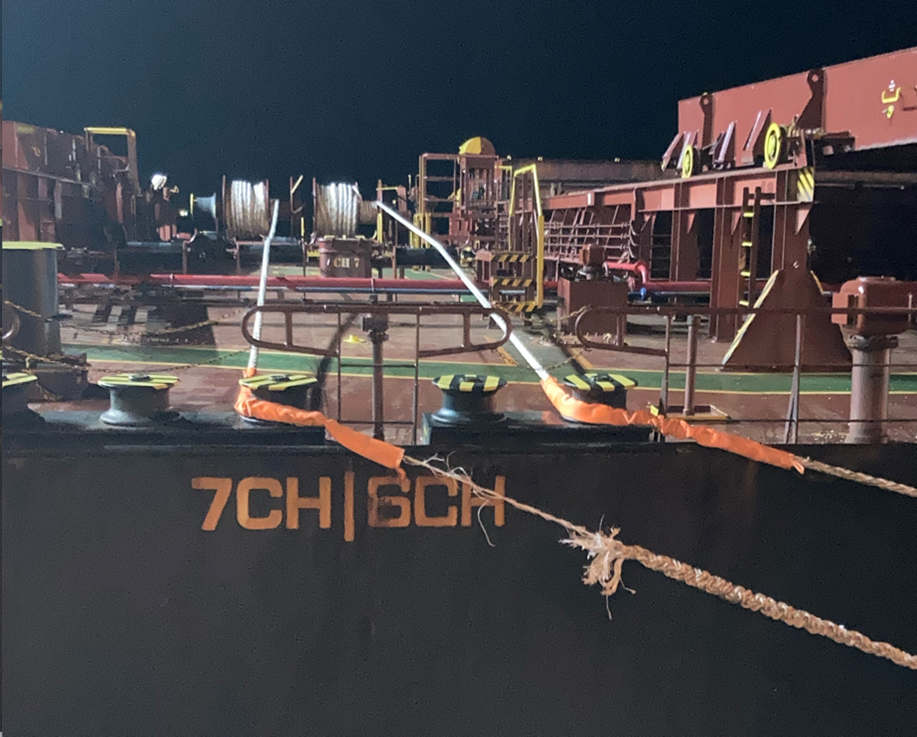
M2150 - Imminent mooring failure averted by vigilant crew
Initial Report
Whilst the vessel was alongside at our terminal, long-period low amplitude swell waves (groundswell) caused a large bulk carrier to yaw and roll. This motion caused the edge of the roller fairlead to saw through one of the forward spring lines. Fortunately, this was detected by the crew before it was cut all the way through, and they were able to replace the line before it parted.
CHIRP Comment
The crew’s response to the potentially dangerous situation was highly commendable; their alertness and quick action ultimately prevented the parting of mooring lines and potential further complications.
CHIRP wonders whether the charterer’s agent properly assessed the berth for suitability in the prevailing weather conditions? Unsafe berth claims go against the charterer, not the owner, so they should have a local agent on site to satisfy themselves that the berth was suitable and to raise concerns with the terminal’s operator.
The design of the mounting block on which the pairs of roller fairleads are mounted requires review. The 90-degree edges act as a blade on surging ropes. Naval architects are reminded that the edges of these should be considered during the design phase of a new vessel. By eliminating such hazards at this stage can significantly decrease the chances of lines abrading or parting during the vessel’s lifetime. OCIMF’s Mooring Equipment Guidelines (MEG4)[1] provide further guidance on the design and construction of the mooring system.
Properly installed moorings are not only essential for the safety of the crew but also for maintaining the ship’s structural integrity. The risks associated with inadequately installed moorings—including the potential for fatalities, injuries, damage, and increased costs—can be effectively minimised by giving importance to mooring design and construction quality.
Vessel owners remain responsible for maintenance in most cases, and they should ensure that such hidden hazards are removed as soon as possible, or at the latest, during the vessel’s next maintenance period.
[1] https://www.ocimf.org/publications/books/mooring-equipment-guidelines-meg4
Key Issues relating to this report
Communications- Are such design shortcomings fed back to naval architects to ensure that future vessels have these hazards removed?
Fit for purpose- Was the berth fit for purpose in the prevailing weather conditions? Did the charterer’s local agent confirm this was the case? Had they raised concerns with the terminal operator?
Teamwork– This report is a good example of effective monitoring by the ship’s crew.
Design- Naval architects should avoid designing sharp edges over which lines are likely to be run. Crews: does your vessel have this issue? If so – report it!